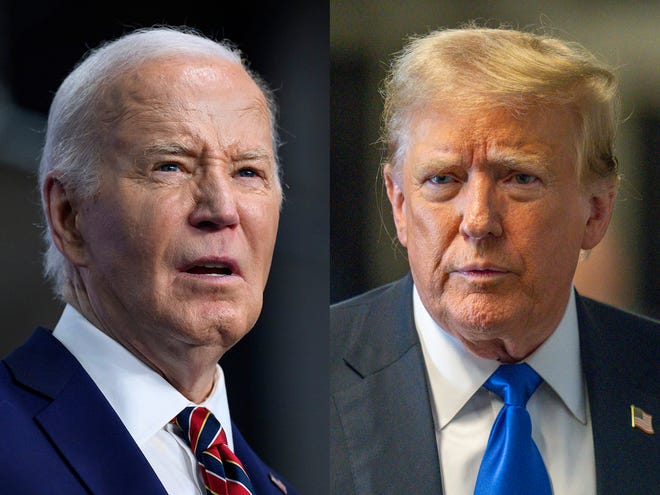President Joe Biden and former President Donald Trump have laid out starkly contrasting blueprints for the U.S. economy as they vie for a second term in November.
Trump has said he would seek to extend and expand his 2017 tax cuts, severely restrict illegal immigration while deporting millions of foreign-born residents, impose tariffs on all U.S. imports, and roll back much of Biden’s initiatives to transition the nation to clean energy.
Biden would extend some of the Trump tax cuts − but not for wealthy individuals and corporations – establish more targeted tariffs on Chinese imports and toughen immigration constraints but not nearly as dramatically as Trump.
He also would push a lengthy wish list of social service programs that would make child care more affordable, provide free college tuition, cancel more student loan debt and lower drug prices, among other proposals. But analysts say they’re unlikely to pass a divided Congress.

“Biden’s policies are better for the economy,” says Mark Zandi, chief economist of Moody’s Analytics. “They lead to more growth and less inflation.”
According to a Moody’s study, Trump’s plan would trigger a recession by mid-2025 and an economy that grows an average 1.3% annually during his four-year term vs. 2.1% under Biden. (The latter is in line with average growth in the decade before the pandemic.)
Next year, under a Trump administration, inflation would rise from the current 3.3% to 3.6%, well above the 2.4% forecast…



























































